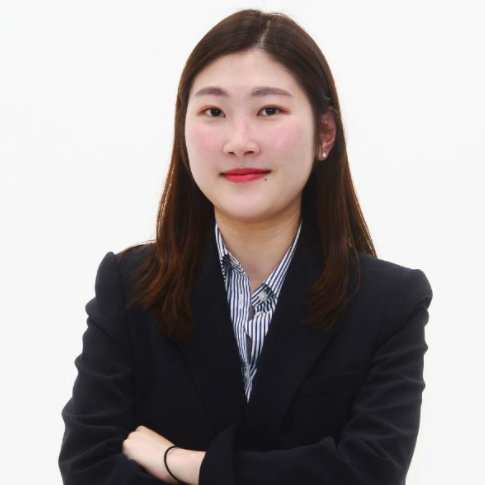S. Korea to hike fees for surgeries, reduce reliance on junior doctors
Government to inject W400b over 5 years to boost salaries for junior doctors, physicians who train them
By Park Jun-heePublished : Aug. 30, 2024 - 18:56

South Korea will raise medical service fees for essential procedures and surgeries and reduce large hospitals' dependence on junior doctors as part of a medical reform package introduced amid a prolonged medical confrontation between the government and doctors over the quota expansion of medical schools.
Noh Yun-hong, who chairs the presidential special committee on medical reform, said Friday that the government would push forward in creating "physician-centered hospitals" nationwide to reduce their dependence on interns and residents in patient care.
To do so, the government plans to inject 400 billion won ($300 million) a year over the next five years to substantially increase paychecks for both junior doctors and the physicians who train them.
While cutting down working hours for junior doctors, they will get training fees of up to 12 million won a year if they specialize in essential medical fields. Those include internal medicine, surgery, emergency medicine and cardiovascular and thoracic surgery.
Junior doctors in tertiary general hospitals will have a physician supervising their training programs so that they learn clinical skills under their direction. The government plans to pay up to 80 million won each for physicians supervising junior doctors.
Aimed at rewarding physicians for quality and value, the government said by 2027 it would raise medical service fees -- the fees charged by health care providers for medical services rendered -- for 3,000 complex but essential medical services that were often undervalued, as compared to cosmetic procedures not covered by the state insurance.
The increase will apply to severe services such as brain and pancreatic cancer surgeries and will be implemented upon approval from the health insurance policy deliberation committee.
At the same time, the government will have hospitals cutting the proportion of junior doctors in the workforce from 40 to 20 percent in the next three years, while restructuring the management operations by replacing the posts with physicians and physician assistant nurses.
Instead, the government plans to implement a new training system next year where junior doctors can gain clinical experience and treat patients ranging from nonurgent to severely critical at cooperative medical institutions or secondary health care facilities. Currently, nearly 70 percent of junior doctors receive training at tertiary general hospitals, mostly seeing patients with severe and complex illnesses, according to the Health Ministry.
The medical circle, however, is criticizing the plan as a scheme that "lowers junior doctors' opportunities" for pedagogical training, developing their clinical skills and gaining experience by seeing various patients at big hospitals -- all compulsory to become specialized physicians.
Also, through a pilot program in 2025, the government will cut junior doctors' continuous duty periods to 24 hours from the current 36 hours and limit weekly working hours to 72 hours. By 2031, officials plan to reduce weekly work hours to 60.
In line with the change, general beds in tertiary general hospitals will be reduced by up to 15 percent, and the proportion of intensive care units will be increased to over 50 percent, allowing medical institutions to focus more on patients in need of immediate and critical care. Nonurgent patients or those with mild illnesses can visit local clinics or neighborhood hospitals.
In addition, the government is mulling whether to require medical institutions to get the health minister's approval when building a general hospital with more than 100 beds.
"As society is set to transfer to a superaged society in the middle of a medical crisis where regional and essential health care is collapsing, now is the last opportunity for change in Korea," Noh told reporters at a briefing, stressing that seismic change in health care was "inevitable."
The government left room for possible compromise with the medical community over the number of new doctors, as it plans to launch a new consultative body this year to analyze the exact number for the future health care workforce needed in line with demographic change.
Health Minister Cho Kyoo-hong noted that discussions about the appropriate increase in medical school admissions are "negotiable" with the medical sector only if it floats a "reasonable proposal."
However, the Korean Medical Association -- the largest doctors' group here -- immediately turned down the offer, countering that the government is engaging in "deceptive behavior."
The committee also plans to establish the Medical Workforce Supply and Demand Forecasting Center under the Korea Institute for Health and Social Affairs next year to predict the future supply and demand of medical professionals.
The committee anticipates expanding the center's role into a comprehensive and specialized agency that could support broader health care workforce management and planning policies, similar to the US Health Resources and Services Administration.





![[Today’s K-pop] Stray Kids Hyunjin becomes face of Cartier](http://res.heraldm.com/phpwas/restmb_idxmake.php?idx=644&simg=/content/image/2024/09/13/20240913050573_0.jpg&u=)











![[Herald Review] Ryoo Seung-wan asks what justice is in “I, the Executioner”](http://res.heraldm.com/phpwas/restmb_idxmake.php?idx=652&simg=/content/image/2024/09/13/20240913050586_0.jpg&u=)
![[Today’s K-pop] Stray Kids Hyunjin becomes face of Cartier](http://res.heraldm.com/phpwas/restmb_idxmake.php?idx=642&simg=/content/image/2024/09/13/20240913050573_0.jpg&u=)